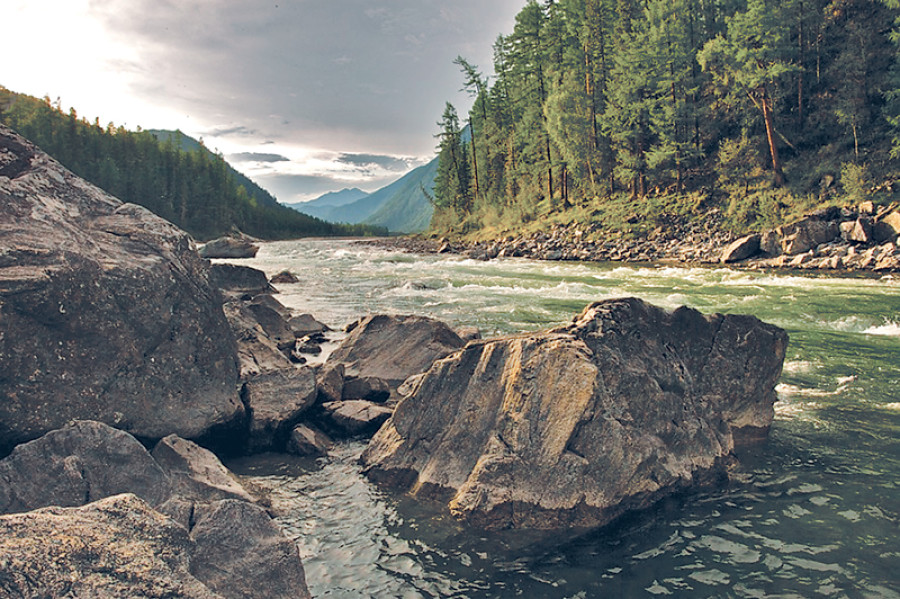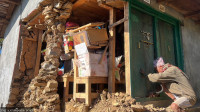Opinion
Watered down
Is water no more one of the key issues between Nepal and India?
Navin Singh Khadka
For many Nepalis, the water resource issue instantly comes to the forefront as far as Nepal-India relations are concerned. They say the white gold that gushes down Nepal’s mountains and gorges—making up to 70 percent of the Ganga’s lean season flow—is what interests India the most in their country. Feeding this deep-seated belief is the worsening scarcity of water in many Indian states. And yet, water is one issue the two countries have not talked about in recent decades. Or, at least, it is not public knowledge.
“There wasn’t any talk on water separately,” Indian Foreign Secretary S Jaishankar said at a press briefing during Prime Minister KP Sharma Oli’s Delhi visit last month. “There were talks on why there was no progress on Upper Karnali and Arun hydropower projects and they (the two prime ministers) discussed about Pancheswor as well,” he said when one journalist asked if anything was discussed on the sharing of water resources between the two countries.
The Tehri project
After the controversial Koshi, Gandak and Mahakali water treaties of the past, New Delhi has noticeably limited its ‘engagement’ largely to hydropower in recent times. And yet, Nepal is increasingly becoming dependent on its southern neighbour for electricity supply.
While India’s policy on Nepal’s water resources remains a matter of speculation for many, one project it has always been keen to show Nepali leaders is the Tehri hydropower dam in the Indian state of Uttarakhand. Former Prime Minister Pushpa Kamal Dahal was taken to the site during his visit in 2008 and so was Oli during his recent official trip. “Our PM (Modi) spoke (to his counterpart Oli) about Tehri project and its relevance because we are developing a number of hydropower projects with Nepal,” Jaishankar said at the press briefing.
It is a multi-purpose project generating power for the northern region of India, providing irrigation benefits to the Indian state of Uttar Pradesh and supplying drinking water to the state as well as New Delhi. “Due to regulated releases from the Tehri storage reservoir, the existing downstream hydro projects of the state are also benefiting by way of augmentation in generation at no additional cost to them,” reads the website of Tehri Hydro Development Corporation India Limited (THDCIL).
With a 260.5 metres high dam, one of the highest of its type in the world, the Tehri project has an installed capacity of 1,000 MW. After its commissioning in 2006, it has grown into a multi-project complex with 400 MW Koteshwar Hydroelectric project and 1,000 MW Tehri Pumped Storage Plant added in later years.
Dahal and Oli surely must have been briefed on all these when they were on the ground. But there is more to that. With an initial mandate to develop, operate and maintain the 2,400 MW Tehri Hydro Power Complex, over the years the THDCIL has grown into a multi-project organisation. It has 16 projects with a total installed capacity of nearly 8,800 MW in different states of India and also in Bhutan. “Under India-Bhutan Cooperation in hydro sector development, THDCIL is implementing 180 MW Bunakha and has taken up updation of DPR of Sankosh hydro electric project (2585 MW) in Bhutan,” THDCIL website states.
Regulating the flow
Does the Tehri project provide any clue what India might have in mind, particularly when it has wanted to show Nepali prime ministers the project and its ‘relevance’ time and again? Let us not forget that India still has huge untapped hydro potentials in its own states like Arunachal Pradesh. This means Nepal’s hydropower resources is not necessarily its ultimate objective for now.
And to add to that, it is doubling its coal production to one billion tonnes in the next couple of years, which will significantly increase its electricity generation from coal-fired power plants. The boost in coal mining has already plugged power into an increasing number of villages—something the Modi government has been boasting about.
Thus, where does all this leave the issue of water between Nepal and India? A layperson’s understanding can be that it is a non-issue because all the rivers and rivulets flowing through Nepal end up joining India’s Ganges river system eventually. That is absolutely true when it comes to the unregulated flow of water. But if the flow is regulated by the means of dams, barrages, reservoirs and storage, the downstream party can benefit by getting more than the usual water during the dry season. Water is collected in these huge structures during the wet season and stored before releasing it during the lean season. The same dams and barrages can also be helpful in terms of controlling flood waters. Regulated flow of water is thus of immense value to any downstream country in the world.
Understandably, if there are hydropower structures in upstream Nepal, it can automatically pave way for regulated water benefiting downstream India. And it was this benefit for which the Nepali technocrats and bureaucrats in the past have argued that India should pay for. Several Nepali officials have even said that the issue of downstream benefits had stonewalled water resource negotiations in the past between the two countries. Some experts even suggested that the water crisis in India would reach such level that New Delhi will itself come asking for the sharing of regulated water benefits.
Time to ponder
That has not happened so far despite reports showing that five of the 20 most water-stressed cities in the world are in India and its capital, Delhi, is second on the list. Satellite images have shown that India’s underground water tables have depleted to dangerously low levels. And the above-ground situation is not good either. Only last week, figures released by the Central Water Commission in New Delhi showed that total water storage in 91 reservoirs in India has dropped to 29 percent of their actual capacity. These reservoirs are supposed to hold more than 60 percent of India’s total storage.
Despite all these, India has not approached Nepal on the issue of water, so far. Instead, it seems to be gradually pushing for hydropower development. This also comes just when the BJP government has been trying to advance the gigantic river-linking project that aims at joining 30 rivers. The idea, originally initiated by the same party when it was in power in the late 90s, is to transfer water from surplus areas to regions where there is a deficit. The Himalayan component of the scheme has 15 linking plans and three of them—Mechi-Kosi, Kosi-Ghagra and Gandak-Ganga—have to do with Nepal. The transfer of water would require huge infrastructure including storage, diversion canals, among others—something hydropower development would require as well.
The question now is whether the Nepali establishment gets the picture. The ‘old’ Nepal dreamt of demanding monetary payments from India for downstream benefits arising even out of hydropower projects the Nepali side planned to develop on its own. Can the ‘new’ Nepal now raise the issue for hydel-projects to be built on Nepali rivers by India or Indian companies? It is a wait and watch game. Or, is it?
Khadka is a BBC journalist based in London




 11.12°C Kathmandu
11.12°C Kathmandu










